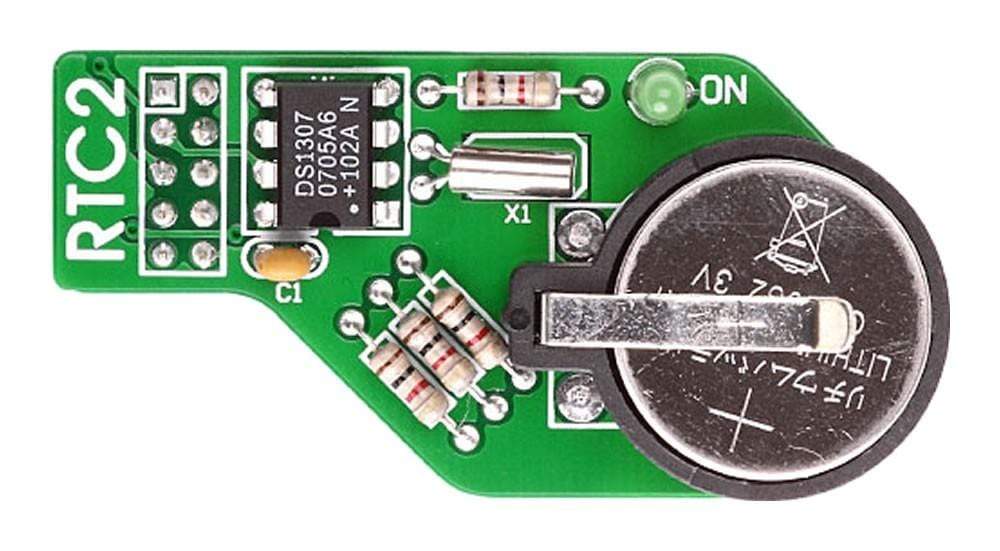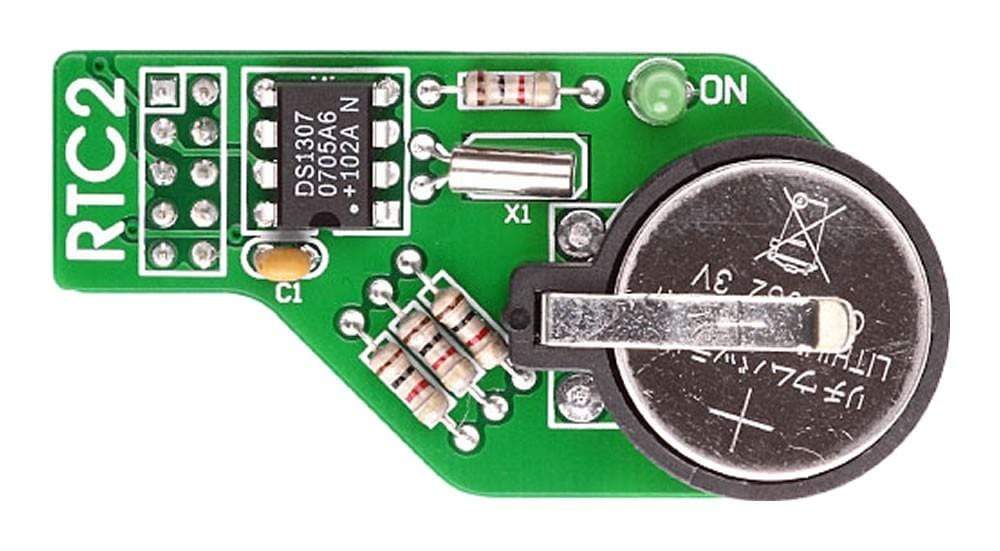
Overview
The RTC 2 Board is an add-on board featuring a low-power DS1307 serial real-time clock (RTC) that enables the microcontroller to keep the real-time and date including corrections for a leap year and months with less than 31 days. The DS1307 aboard the RTC2 board is full binary-coded decimal (BCD) clock/calendar with 56 bytes of NV SRAM. The board has an integrated power-sense circuit that detects power failures and automatically switches to the backup supply. The board has a female IDC10 connector to plug it into a development system. The RTC2 Board uses the serial I2C interface for communication to the microcontroller. There are two options for the location of the SCL and SDA pins; their position can be changed by soldering an SMD jumper. It works as an extension of existing development boards in applications where real-time data is required. It is designed to operate using a 5V power supply only.
The RTC2 Board is an ideal choice for applications that involve the use of real-time clocks, calendars, and programmed alarms.
Downloads
Die RTC 2-Platine ist eine Zusatzplatine mit einer stromsparenden seriellen DS1307-Echtzeituhr (RTC), die es dem Mikrocontroller ermöglicht, die Echtzeit und das Datum einschließlich Korrekturen für Schaltjahre und Monate mit weniger als 31 Tagen beizubehalten. Der DS1307 an Bord der RTC2-Platine ist eine vollständig binär codierte Dezimaluhr (BCD)/ein Kalender mit 56 Byte NV SRAM. Die Platine verfügt über eine integrierte Stromsensorschaltung, die Stromausfälle erkennt und automatisch auf die Notstromversorgung umschaltet. Die Platine verfügt über einen weiblichen IDC10-Anschluss, um sie in ein Entwicklungssystem einzustecken. Die RTC2-Platine verwendet die serielle I2C-Schnittstelle zur Kommunikation mit dem Mikrocontroller. Es gibt zwei Optionen für die Position der SCL- und SDA-Pins; ihre Position kann durch Löten eines SMD-Jumpers geändert werden. Sie funktioniert als Erweiterung vorhandener Entwicklungsplatinen in Anwendungen, in denen Echtzeitdaten erforderlich sind. Sie ist für den Betrieb nur mit einer 5-V-Stromversorgung ausgelegt.
Die RTC2-Platine ist die ideale Wahl für Anwendungen, bei denen Echtzeituhren, Kalender und programmierte Alarme zum Einsatz kommen.
| General Information | |
|---|---|
Part Number (SKU) |
MIKROE-330
|
Manufacturer |
|
| Physical and Mechanical | |
Weight |
0.1 kg
|
| Other | |
Warranty |
|
HS Code Customs Tariff code
|
|
EAN |
8606015072067
|
Frequently Asked Questions
Have a Question?
Be the first to ask a question about this.

